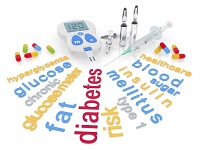The American Diabetes Association recognizes March 28, 2017 as Diabetes Alert Day. The intention of this day is to bring awareness to the prevalence of Type 2 Diabetes in America. http://www.diabetes.org/are-you-at-risk/alert-day/
I have a strong family history of type 2 diabetes, which throughout the years has motivated me to learn more about its prevention, treatment, and the different ways I could help my family accept and manage their diagnosis.
On the professional level I have been working in the fitness industry for almost twenty years. In this time I have interacted with many newly diagnosed diabetes clients. After diagnosis, their health care provider offers education and prescribes treatment. A nutritionist will teach carbohydrate counting, meal planning, and how to make healthy food choices. My role as the fitness professional is to educate about the importance of exercise and how it strongly factors into good diabetes management.
For clients who are new to exercise, becoming active can be a challenge at first. However, implementing small changes with the support of family, friends and their diabetes health care team, can set the stage for success and good diabetes control.
The benefits of exercising with diabetes are vast. It may improve blood sugar levels, reduce blood pressure and other cardiovascular risks, lower body weight, reduce the risk of depression, improve the quality of sleep, and work to decrease the risks of diabetes related complications such as neuropathy and retinopathy.
So where is a good place to start?
Create your SMART GOAL
- S-Specific
- M-Measurable
- A-Attainable
- R-Relevant
- T-Timely
An example of a SMART goal might be the following:
“My goal is to help manage my diabetes by walking after dinner. I will track my steps using a pedometer or app such as charity miles or myfitnesspal. My initial goal is to walk for 20 minutes 3 nights a week. This goal motivates me to manage my diabetes through an activity that I enjoy. At the end of one month I will reassess my goal.”
Always remember that some exercise is better than none. It can be as simple as parking a little further away from your destination and walking, or taking the stairs instead of the elevator. Discover the activities that YOU enjoy. Walking, swimming, biking, dancing, playing a sport, or taking a group exercise class are all great options.
A few important tips:
- Stay hydrated by drinking water before, during and after exercise.
- Monitor your blood glucose before and after you exercise.
- Keep an emergency carbohydrate snack on hand in the case of a hypoglycemic event (crucial if on insulin or have type I diabetes).
- Your feet are important! Always wear closed toe shoes, comfortable socks, and keep a close eye on any signs of irritation.
Congratulations for making the commitment to help manage your diabetes through exercise! Talk with the members of your diabetes healthcare team and ask questions as they arise. We are here to support you on your journey and want nothing more than for you to be successful!
This month, SAS Life is featuring glucose management related posts in observance of Diabetes Alert Day. For more information, visit the American Diabetes Association's website. Be sure to check out the entire series.
- The Best Thing Since Sliced Bread by Ashley Bailey, MS, RDN, LDN
- Take It or Leave It: Common Fitness Myths Debunked by Chelsea Jones
- Cauliflower Rice...Wait, What? by Cathy Greer Mazanec, MPH, RDN, CSSD, LDN


1 Comment
Great article! Thanks for sharing your wealth of knowledge with us.